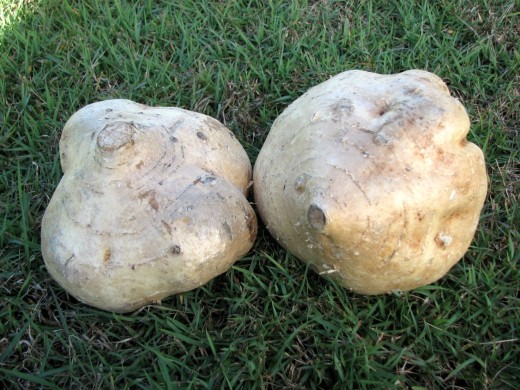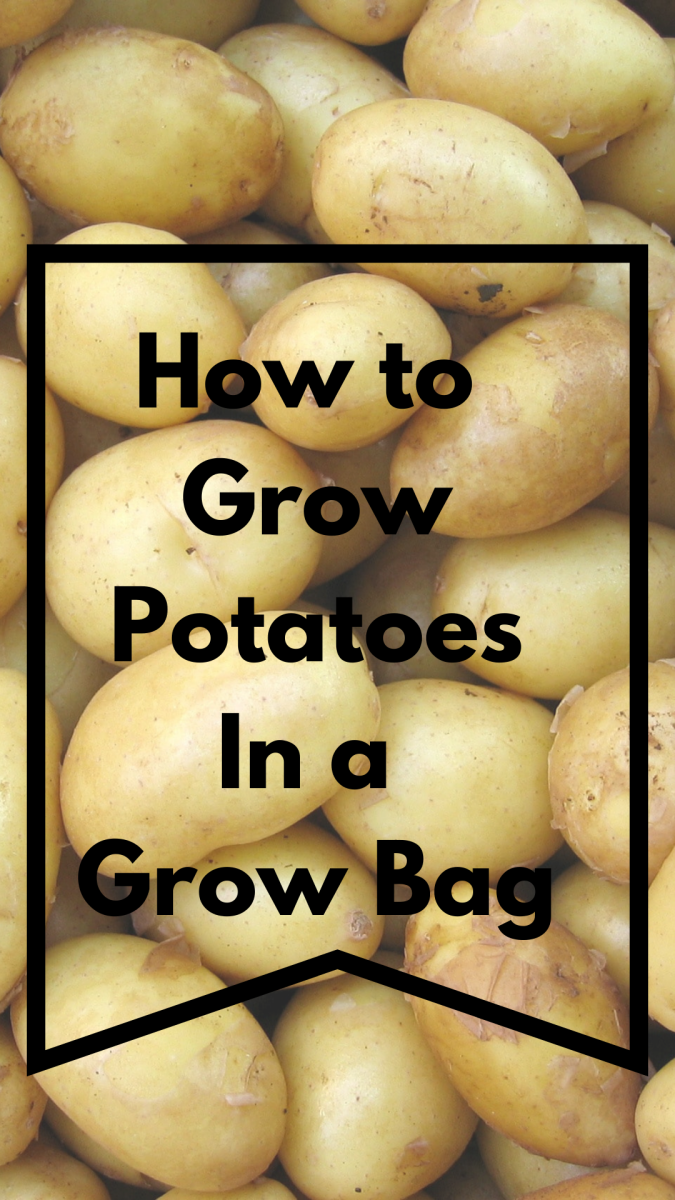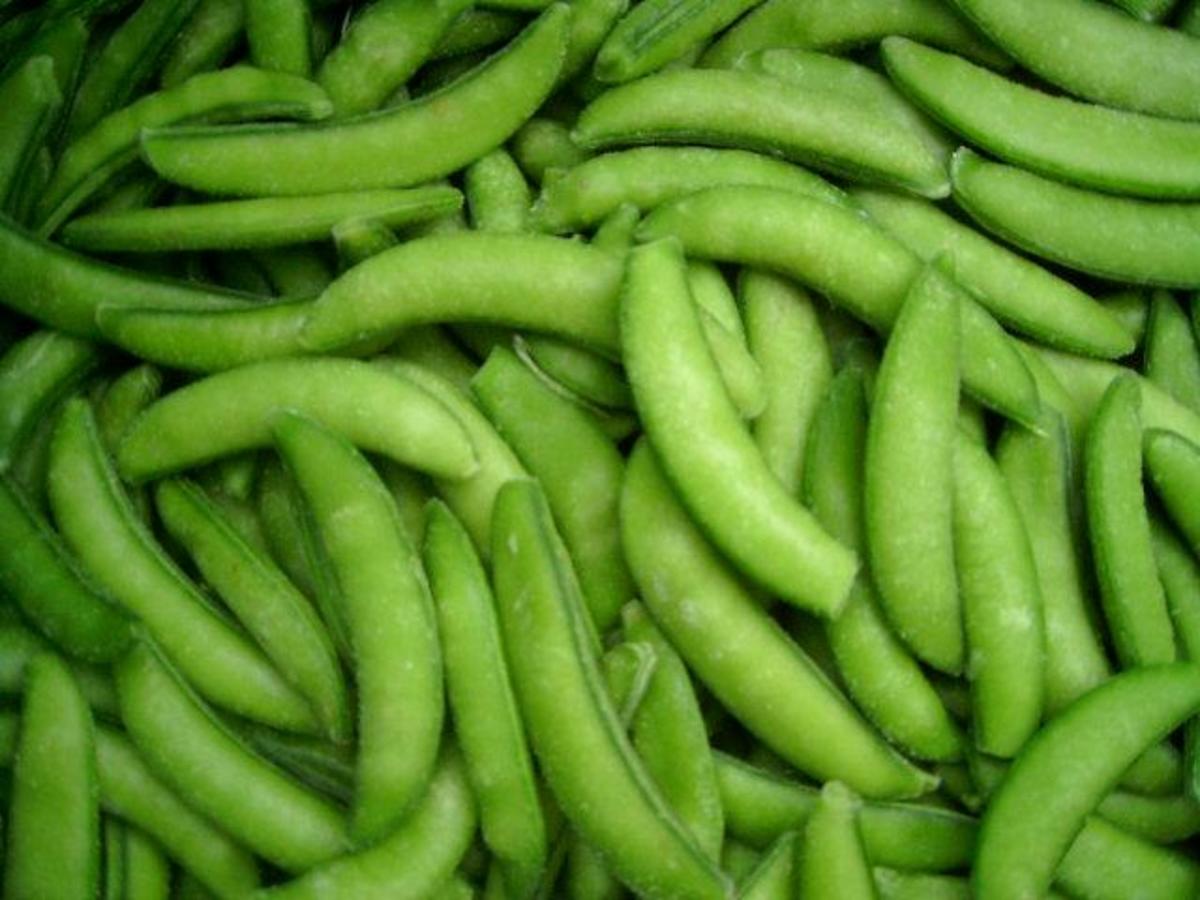Jicama Yam Bean (Pachyrhizus erosus)

Taxonomy & Origin of Jicama
Jicama, also known as Yam Bean (which is also used as a collective name for its genus), Mexican Yam, Mexican Turnip or Mexican Potato is a vigorous, herbaceous, leguminous (member of the family Fabaceae), vine native to Mexico.
The scientific name of Jicama is Pachyrhizus erosus. Pachyrhizus derived from Greek and meaning thick-rooted is a reference to the thicken edible tap-root of this plant. Erosus means jagged and is probably in reference to the jagged leaf margins of this plant.
Although Mexican in origin, Yam Beans are also grown extensively in Asia. They were introduced into the Philippines by Spanish traders and spread to China and South-East Asia from there.
Growth Habit of Jicama
Pachyrhizus erosus can grow up to 5m high (16 feet) if grown under ideal conditions. As it’s a climbing vine it need a trellis to grow up for best performance, although I’ve had some success growing the vines up small trees.
The often single (although there can sometimes be up to five per plant), tuber-like tap roots which normally sit just under the surface of the soil can expand to an enormous size, up to 2m (6.5 ft) in diameter under ideal conditions. The largest Jicama root every recorded was from a plant uprooted in the Philippines during 2010, it weighed a staggering 23kg (50 lb).
While Jicama plants will grow for many years as a perennial and reshoot form its underground taproot during Spring if not uprooted, they are most often grown as annuals then harvested at the end of the growing season when the leaves die back in early Winter.
The leaves of Jicama are tri-foliate having three, large, separate leaflets per leaf. The leaflets have a distinctive jagged margin.
The pretty pea flowers of Pachyrhizus erosus are large and blue in colour, but should be removed if children are present as both they and the beans that follow are highly toxic. Flower production also saps a lot of energy from the plant and will slow the growth of the root. If there is no threat of children being poisoned you can let a few plants go to seed for planting the next season.
Edibility of Jicama Roots
The skin of the root of Pachyrhizus erosus is tan in color, papery, thin and peels away easily from the flesh even by hand. The flesh within is white in colour and crisp and juicy like an apple in texture. The entire interior of the expanded section of roots is edible raw or cooked.
The flavour of plain, raw Jicama root is pleasant and similar to the taste of raw garden peas, with a slight sweetness and earthiness. Yam Bean roots are full of water and very refreshing on a warm day.
Raw Yam Bean can be sliced and eaten with salads or salsa. A common way to eat it involves slicing it raw and adding seasoning it with a mix of diced or powdered chili, ginger, cilantro, red onion, sesame oil, soy sauce and citrus juices. Alternatively it can be cubed or sliced and added to soups or stir-fries.
All other parts of the Yam Bean plant including the leaves, stems, seeds and flowers are toxic as they contain a harmful compound called rotenone which is also found in insecticide preparations.
Nutrition of Jicama Roots
Jicama roots are mostly water (up to 90% of the mass of the root), the remainder of the roots are largest comprised of healthy fibre, with trace amounts of protein and fat.
The sweetness of Yam Beans comes from a compound called oligofructose inulin, which although sweet isn’t digestable by us. However this oligofructose inulin is digestible by bacteria in the digestive system and helps to promote healthy gut flora.
Yam Bean is extremely healthy and rich in vitamin C, vitamin B and vitamin A and high in the minerals calcium and phosphorus.
Storage of Jicama Roots
Pachyrhizus erosus roots can last up to two months when they are stored in a cool, dry place and kept between 12 and 16 degrees Celsius (53 to 61 degrees Fahrenheit). Do not refrigerate the roots of Yam Bean as it can cause damage to the tissues of the root. Temperatures hotter than this ideal range combined with high humidity can cause the stored roots to begin to rot, although rotten sections of Jicama root can be cut out and the rest still eaten.
Growing Tips for Yam Bean / Jicama
As Pachyrhizus erosus is tropical in origin in grows best in sub-tropical and tropical regions as it’s susceptible to frosts. It requires a nine month long, frost-free growing season to produce good sized roots. In the tropics they will grow and can be sown all year round.
To achieve the required growing time in the sub-tropics, sow seed into the ground during early Spring as soon as the soil begins to warm. In areas that experience late frosts, the Jicama seeds can be started indoors up to 10 weeks prior to the last frost to make the most of the growing season. Seeds started indoors will need to be grown in containers placed on a heating pad as they require warm soil to germinate. Yam Beans grown in cooler areas will have smaller roots.
Choose a growing site that receives full sun and has a rich, fertile, free-draining soil. Add compost to the soil if lacking in organic matter. As Jicama need good levels of soil potassium to grow, composts that have been made with banana peels as an ingredient are ideal as they contain high levels of this nutrient. Sow the seed 6cm (2 inches) deep and space plants about 24cm (8 inches) apart to allow the roots plenty of room to expand.



